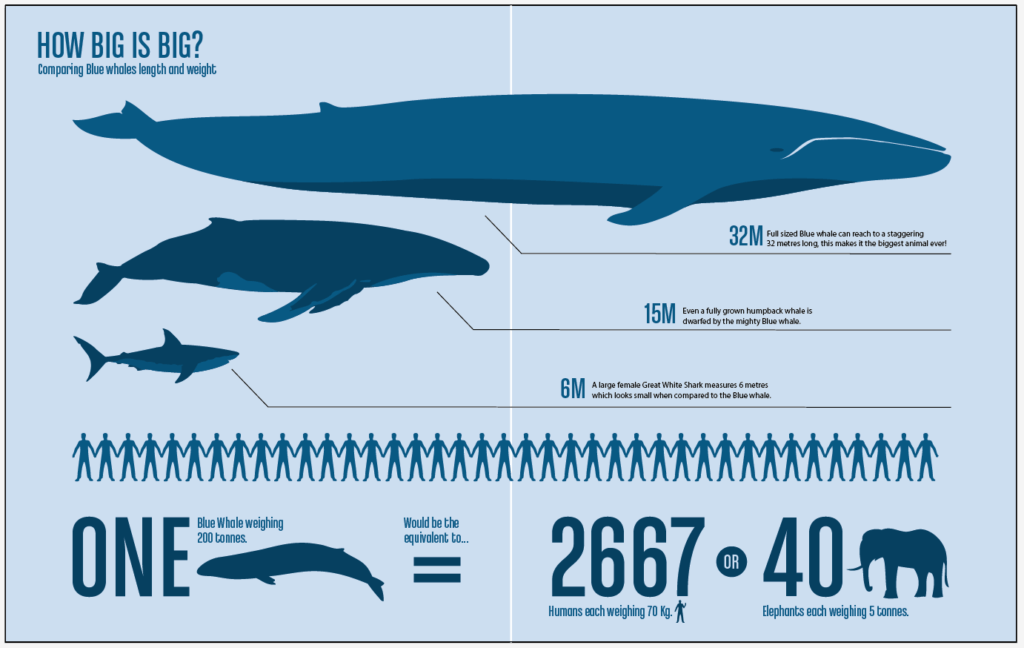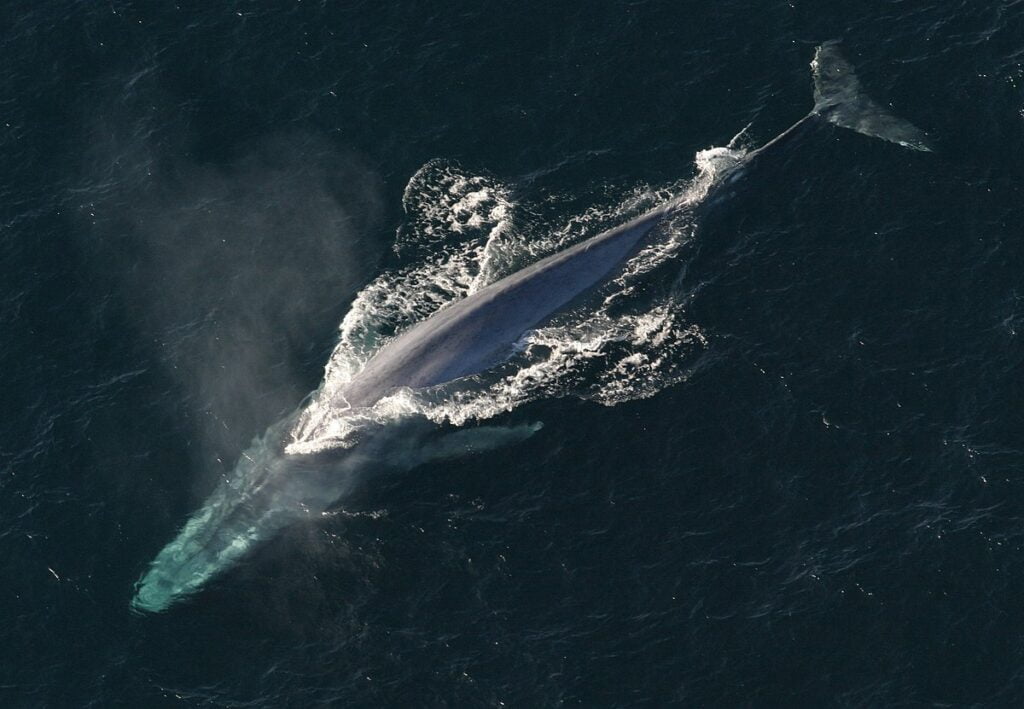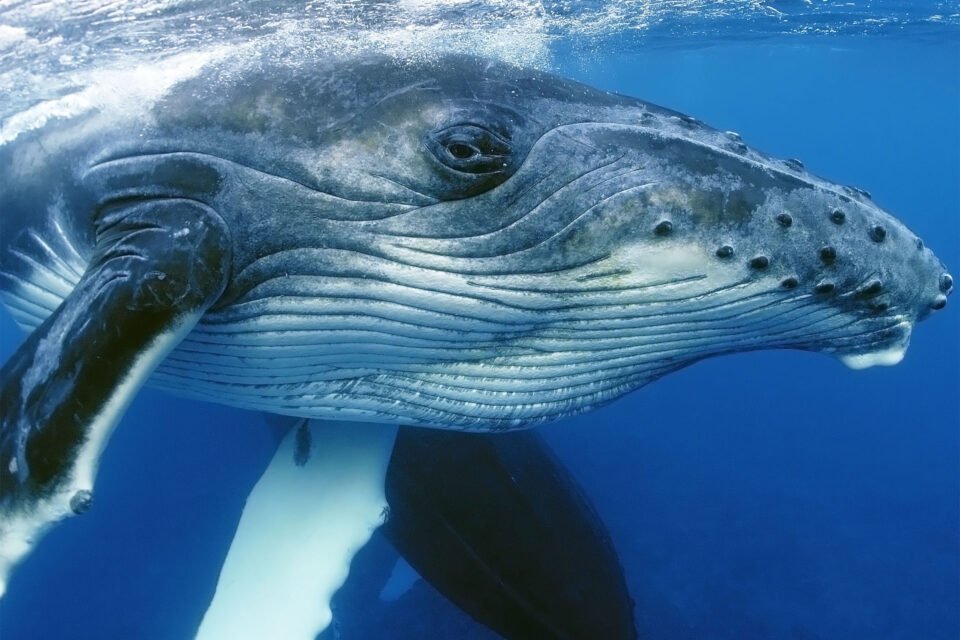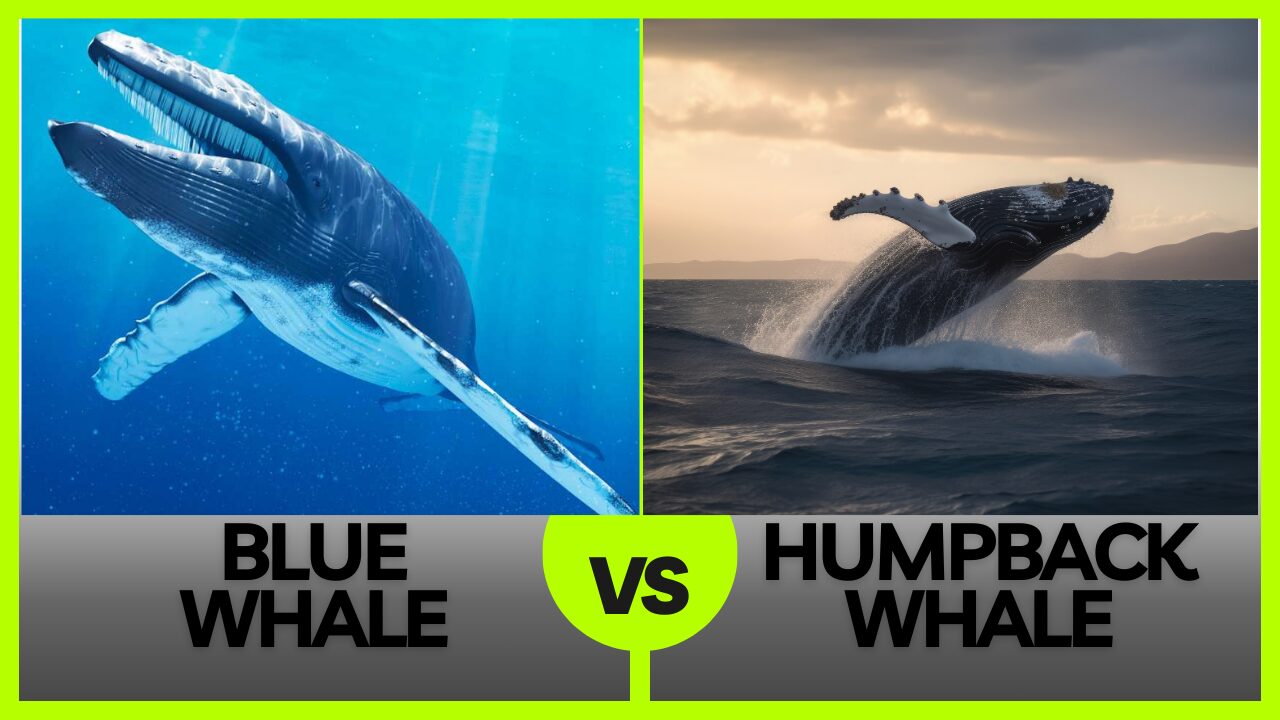The Blue whale (Balaenoptera musculus) and the Humpback whale (Megaptera novaeangliae) are two of the largest creatures on Earth. These marine mammoths have made people curious for centuries with their immense size, strength, and raw power. But which whale reigns supreme as the great giant of the seas when compared head to head? By examining key attributes like size, feeding habits, physical abilities, habitat range, social behaviors, and conservation status, we can determine which leviathan is truly ruler of the ocean. Let’s dive in to the great battle: Blue Whale Vs Humpback: Great Giants Comparison 2024
But before we go into the battle ground we must know about the whale:
What are whales
Whales are large marine mammals that belong to the order Cetacea, a group that includes dolphins and porpoises. Here are some key facts we must know about whales:
- Whales are divided into two main groups – baleen whales and toothed whales.
- Baleen whales have bristle-like baleen plates in their mouths instead of teeth that they use to filter feed on small prey like krill and fish. Examples of baleen whales are blue whales, humpback whales, and gray whales.
- Toothed whales have teeth to catch larger prey like fish, squid, seals, and other marine mammals. Examples of toothed whales include sperm whales, killer whales, dolphins, and porpoises.
- All whales breathe air through blowholes on the top of their heads. When they reach surface to breathe, they expel a spout of vaporized water.
- Whales communicate through complex vocalizations including clicks, whistles, and songs. They use echolocation for navigation and finding prey.
- Whales play an important role in the health of marine ecosystems by cycling and transferring nutrients. Many cultures hold whales in high regard.
- Many whale populations were reduced by commercial whaling in the past. According to the World Wildlife Fund, whales face ongoing threats today like pollution, ship strikes, and entanglement in fishing gear
- The International Whaling Commission (IWC) is the international organization responsible for regulating whale hunting.
Blue Whale Vs Humpback comparison
Size
*Winner- Blue whale

Blue whales are the largest animals ever known to have existed on Earth. The biggest blue whales can reach up to 100 feet (30-32mt) long and weigh over 200 tons. Females are larger than males and give birth to calves that are about 23 feet long and weigh 3-5 tons after a 10-12 month gestation. Given their enormous size, blue whales have skin that covers a surface area roughly the size of a basketball court. A blue whale’s heart is the size of a small car, around 5 feet. Their tongues alone can weigh as much as an adult elephant
Humpback whales are considerably smaller, reaching 40 and 60 feet (12-20mt) length and weighing around 40 tons at maturity. Females tend to be slightly larger than males. Humpback Whales are relatively small at birth. Calves are born in warmer breeding water and they measure around 10 to 15 feet in length and weigh around one ton after 9-12 month gestation.
#Blue Whale Vs Humpback| In the size category, the Blue Whale emerges as the clear winner. It is the largest creature to have ever graced the Earth.
Appearance
*Winner- Tie

The name “blue whale” comes from their unique mottled blue-gray coloration. Their undersides are lighter, while their backs and sides appear blue, gray, or brown. Blue whales have long, slender bodies with a tapered head and slim tail stock. Their bodies can be somewhat compressed laterally. they don’t have teeth but have hundreds of fringed overlapping plates hanging from their upper jaws . They use these baleen plates to filter and eat small prey. They have a single blowhole on the top of their head through which they expel air and vapor when surfacing to breathe. Their blow can reach over 30 feet in height. Antarctic blue whales are larger than other blue whale species.

Humpbacks are all black on top and completely white below, with signature bumps on their heads. They have a stocky body with an elongated head. Their body is more chubby than other baleen whales. Two blowholes are located on the top of their heads through which they spout air. Blue whales shoot vertical columns, while humpbacks have bushier blows.
#Blue Whale Vs Humpback| So for memorable looks, it’s a draw between the subtly patterned blue whale and the stark blacks & whites of humpback.
Habitat
*Winner- Humpback
Blue whales typically live further offshore in deep marine waters, only coming close to shore at continental shelves to feed. So blue whales live only in open oceans and rarely come into shallow coastal waters. Blue whales with young calves are regularly observed in the Gulf of California (Sea of Cortez) from December through March. Important feeding grounds are located off the coasts of California, Gulf of St. Lawrence, Iceland, and Costa Rica year-round. Breeding takes place in tropical and subtropical waters. Key breeding areas are the Costa Rica Dome and Galápagos Islands.
Humpbacks inhabit all major oceans plus certain semi-enclosed seas. They live in all types of tropical to temperate waters. Humpbacks are found in places like the Arabian Sea, Sea of Japan, and Gulf of Maine. This adaptability to more coastal waters gives humpbacks the winning edge for habitat range.
#Blue Whale Vs Humpback| This adaptability to more coastal waters gives humpbacks the winning edge for habitat range.
Lifespan
*Winner- Blue whale
The Blue Whale has an estimated lifespan of 70 to 90 years. According to National Oceanic and Atmospheric Administration (NOAA) Scientists can estimate the age of whales by counting the layers of wax-like earplugs collected from deceased animals . The layers of earplug wax accumulate throughout a whale’s life provide a chronological record similar to tree rings.
Humpback Whales generally have a shorter lifespan compared to Blue Whales. They are estimated to live between 50 and 60 years. Similar to Blue Whales, age estimation in Humpbacks relies on methods such as earplug analysis and examination of baleen plates.
#Blue Whale Vs Humpback| Here long living-blue whale take the prize.
Feeding
*Winner- Tie
According to the Natural History Museum Blue whales feed almost exclusively on tiny shrimp-like crustaceans called krill. Their diet is over 99% krill. They target extremely dense patches and swarms of krill, consuming up to 4 tons of krill in a single day. They filter feed by taking in huge volumes of water and prey, then pushing the water out of their mouths through baleen plates, trapping the krill inside to swallow.
Humpback whales use a complex feeding technique known as bubble-net feeding. According to a research led by National Oceanic and Atmospheric Administration, Bubble net feeding is a behavior in which humpback whales enclose and contain fish into a small area by trapping them in nets of air bubbles so they can more efficiently scoop them up in their large filter-feeding mouths. Humpbacks feed on small schooling fish like herring, anchovies, and krill. They may eat up to 2 tons of food per day.
#Blue Whale Vs Humpback| Since each is so well adapted to their niche diets, it’s a tie for feeding.
Speed
*Winner- Blue whale
According to The American Museum of Natural History, A blue whale’s most efficient swimming speed is 2 meters per second (4.5 mph). That speed doesn’t use too much energy. At that speed a blue whale can cruise around and migrate long distances with very little effort. But when it needs to, it can also swim in bursts as fast as 48 kph (30 mph). The blue whale’s immense size generates more powerful thrust. Their hydrodynamic body can reach higher speeds. Blue whales accelerate faster than humpbacks due to their streamlined shape. They migrate farther distances across oceans, favoring speed.
Humpback whales are known for their acrobatic displays and agile movements. They have average cruising speed of 6-15 km/h (4-9 mph) and top speed is up to 26 km/h (16 mph) in bursts. Humpbacks are slower from a resting position but can build up speed with their flippers. They are more agile and navigate well at slower speeds and breaches more often.
#Blue Whale Vs Humpback| “A healthy whale is a fat whale” and the larger an animal is, the more efficient its metabolism. So the larger blue whale is capable of greater top speeds and acceleration, while the more agile humpback maneuvers well at slower speeds.
Vocal Talent
*Winner- Humpback
Blue whales generate the loudest calls on Earth – up to 188 decibels heard for hundreds of miles! Their vocalizations are very low frequency, in the 10-100 Hz range. Low frequency of voice enables their calls to travel huge distances across oceans. Their vocalizations consist of simple, moaning cries repeated in patterns. They make the same, simple, repetitive calls. The purpose of blue whale calls is less studied but includes long-distance communication for mating and connecting with other whales.
Humpback whales are known for their complex, haunting songs that are far more elaborate than blue whale vocalizations. Humpback songs can last up to 30 minutes with structured repetition. They all have distinct songs/voices. Humpbacks modify their songs over time and teach new versions to each other. Their song evolves culturally. The songs of humpbacks span a wider range of frequencies. Singing humpbacks display surface behaviors like pec slapping, which may complement the song.
#Blue Whale Vs Humpback| So, Humpback whale songs have more vocal variations compared to the simple, repetitive call patterns of blue whales.
Conservation Status
*Winner- Humpback
Blue whales are still listed as Endangered under the Endangered Species Act. and IUCN Red List of Threatened Species. In 1966 the International Whaling Commission declared them protected throughout the world. Currently their population estimates only around 3% of their numbers before commercial whaling severely depleted them. The species is listed under CITES Appendix II. Major ongoing threats like ship strikes, fishing gear entanglements, and climate impacts on their food supply indicate blue whales remain in a precarious state. Their global population is likely only 10,000-15,000 currently.
In contrast, humpback whales have rebounded more successfully from whaling. They were delisted from the ESA in 2016 as their global numbers increased to approximately 60,000-80,000, or 30-40% of pre-whaling populations. According to IUCN Red List The humpback whale has moved from Vulnerable to Least Concern, meaning it is at low risk of extinction. While still facing dangers from ship collisions, entanglement and ocean noise, humpback whales as a species have a healthier outlook and Lower Risk conservation status.
#Blue Whale Vs Humpback| So while both species were heavily whaled, humpback populations have rebounded more robustly. Blue whales remain endangered with slower recovery and face more existential threats.
FAQs
Q: Which whale is bigger, the blue whale or humpback whale?
A: The blue whale is bigger. Blue whales reach lengths of up to 100 feet and can weigh over 200 tons. Humpback whales reach about 52 feet long and 40 tons.
Q: What do blue whales eat compared to humpback whales?
A: Blue whales eat almost exclusively small shrimp-like creatures called krill. Humpback whales eat both krill and small schooling fish.
Q: How do the habitats of blue and humpback whales differ?
A: Blue whales live only in open ocean environments. Humpback whales live in all major oceans and also migrate through certain semi-enclosed seas.
Q: Which whale has the most complex vocalizations?
A: The humpback whale is known for its long, complex, and melodic songs that change throughout breeding seasons.
Q: What are the lifespan differences between the species?
A: Blue whales have an average lifespan of 80-90 years which is longer than the 50-60 year average lifespan of humpback whales.
Q: Which whale recovered better from whaling?
A: Most humpback whale populations have rebounded more successfully compared to blue whales and are no longer endangered.
Q: Which whale has the biggest babies?
A: Newborn blue whale calves can weigh up to 5 tons and be 23 feet long, bigger than a humpback calf’s 2 tons and 12 feet.
Q: Which whale can swim faster?
A: Blue whales can burst up to speeds of 23 mph compared to 15 mph maximum for humpback whales.
Q: Which whale is more acrobatic?
A: Humpback whales are known for breaching, lobtailing, and pectoral fin slapping behaviors. Blue whales do not demonstrate these surface acrobatics.
Q: Which whale has the taller blowhole spray?
A: The blue whale’s blow can shoot up to 30 feet vertically into the air, much higher than the lower bushier blows of humpbacks.
Conclusion
And there you have it! A head-to-head comparison of these two marine mega-mammals. Now it’s your turn to decide: Based on the attributes we covered, which sea giant comes out on top in your book – the mighty Blue whale or the musical Humpback? Do you agree with the ‘winners’ declared for each category or might you judge differently? Share your thoughts and opinions in the comments below!

